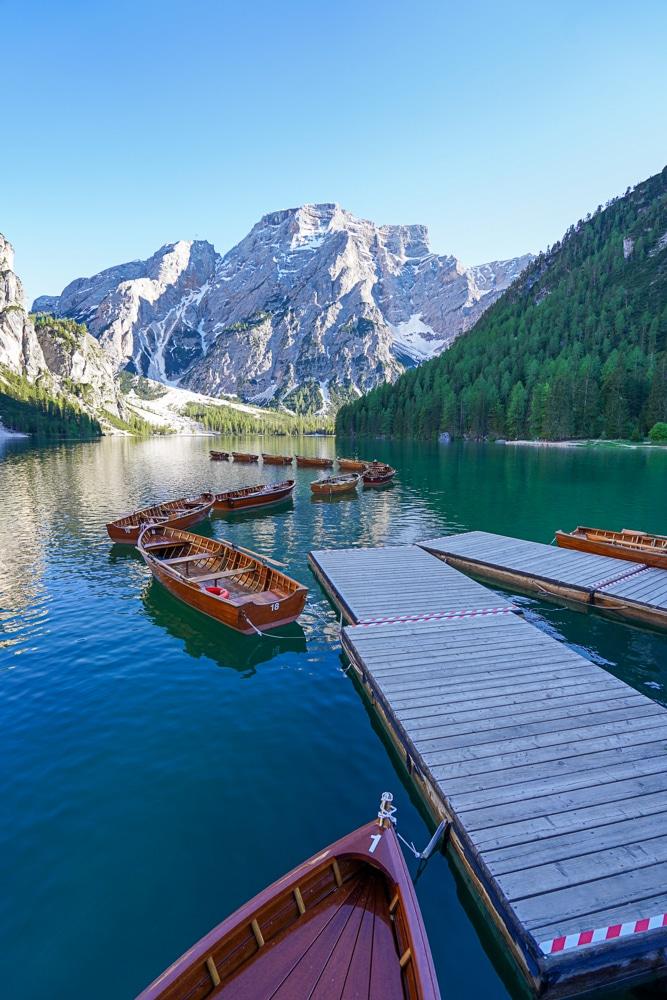New research reveals that shifting winter conditions driven by climate change are poised to have the most profound impact on northern lakes across the country. Scientists warn that rising temperatures and reduced ice cover will disrupt aquatic ecosystems, affect local economies, and alter recreational patterns in these communities. As winters grow milder and shorter, residents and policymakers in northern regions face mounting challenges navigating the environmental and social consequences of a rapidly changing season. This report delves into the latest findings and explores what they mean for hometowns reliant on their lakes during winter months.
Impact of Warmer Winters on Ice Cover and Lake Ecosystems
Warmer winter temperatures are substantially shortening the duration and thickness of ice cover on northern lakes, fundamentally altering their natural cycles. This shift disrupts the protective ice layer that typically insulates aquatic ecosystems from severe winter temperature fluctuations. As a result, lakes are experiencing increased water temperature variability, which can lead to oxygen depletion and affect the survival of native species. Research indicates that these warmer winters are accelerating the timing of ice melt by an average of two weeks earlier compared to data from the late 20th century.
- Fish Populations: Earlier ice-off dates change spawning cues, threatening species like lake trout and whitefish.
- Algal Blooms: Longer open-water periods promote harmful algal growth, impacting water quality and recreation.
- Food Webs: Disruptions in plankton cycles weaken the entire aquatic food chain, affecting birds and mammals reliant on these lakes.
| Impact Indicator | Change Observed (Past 30 Years) | Ecological Consequence |
|---|---|---|
| Ice Cover Duration | ↓ 15 days | Reduced thermal barrier, earlier warming |
| Oxygen Levels in Winter | ↓ 20% | Stress on cold-water species |
| Algal Bloom Frequency | ↑ 35% | Water quality degradation |
Consequences for Local Fishing and Recreation Industries
Local economies heavily reliant on fishing and recreational activities face growing uncertainty as shifting winter patterns alter the delicate aquatic environment. Reduced ice cover and shorter frozen periods translate into disrupted fish breeding cycles and decreased fish populations, directly impacting commercial and recreational catches. Many anglers report a noticeable decline in traditional species, prompting concerns over the sustainability of local fish stocks and the long-term viability of fishing as a livelihood.
Recreational industries, including ice fishing charters, winter festivals, and snowmobiling businesses, are also bracing for significant losses. These sectors depend on reliable ice conditions to attract tourists during colder months. The following table highlights typical winter-season revenues for northern lake communities and projected changes based on current climate models:
| Industry | Average Winter Revenue (Pre-Change) | Estimated Revenue Decline (%) |
|---|---|---|
| Ice Fishing Charters | $500,000 | 35% |
| Snowmobile Rentals | $350,000 | 40% |
| Winter Festivals | $200,000 | 25% |
Communities are urged to consider adaptive strategies, such as diversifying recreational offerings or enhancing fish habitat restoration efforts, to mitigate these losses and sustain local economies.
Strategies for Community Adaptation and Environmental Protection
Communities bordering northern lakes are increasingly adopting innovative measures to mitigate the impact of shorter, warmer winters on their local environments. Collaborative efforts between local governments, indigenous groups, and environmental organizations are fostering resilience by restoring wetlands, enhancing shoreline vegetation, and implementing natural buffers to reduce erosion. These nature-based solutions not only protect critical habitats but also improve water quality and help regulate temperature fluctuations in lake ecosystems.
In parallel, public education campaigns are emphasizing the importance of sustainable practices such as reduced chemical runoff and responsible land use. Below is a summary of key adaptation strategies gaining traction in affected communities:
- Wetland restoration: Reestablishing aquatic plant zones to absorb excess nutrients and provide wildlife habitat.
- Shoreline management: Planting native species that stabilize banks and prevent sediment loss.
- Community monitoring: Citizen science projects tracking changes in ice cover and water quality.
- Policy advocacy: Pushing for local regulations limiting development near vulnerable lake edges.
| Strategy | Benefit | Community Example |
|---|---|---|
| Wetland Restoration | Improves water filtration | Lake Superior Basin |
| Shoreline Planting | Reduces erosion | Boundary Waters Region |
| Citizen Monitoring | Data for informed decisions | Lake Champlain |
| Policy Advocacy | Protects natural habitats | Great Bear Lake Communities |
In Conclusion
As new research continues to shed light on the profound impacts of changing winter conditions, northern lakes emerge as some of the most vulnerable ecosystems. These findings underscore the urgent need for targeted conservation efforts and adaptive policies to mitigate the effects on local communities and wildlife. As the season’s chill wanes, scientists and residents alike are called to pay closer attention to the warming trends reshaping their natural environment – a reminder that the reverberations of climate change are as close as the waters of home.
